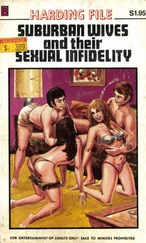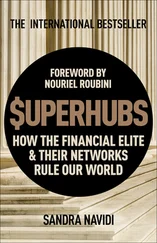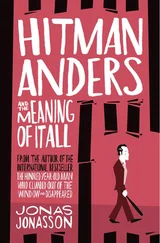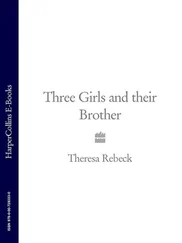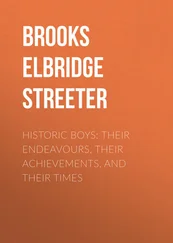Leopold Wagner - Names - and Their Meaning
Здесь есть возможность читать онлайн «Leopold Wagner - Names - and Their Meaning» — ознакомительный отрывок электронной книги совершенно бесплатно, а после прочтения отрывка купить полную версию. В некоторых случаях можно слушать аудио, скачать через торрент в формате fb2 и присутствует краткое содержание. Жанр: Эзотерика, foreign_religion, foreign_antique, на английском языке. Описание произведения, (предисловие) а так же отзывы посетителей доступны на портале библиотеки ЛибКат.
- Название:Names: and Their Meaning
- Автор:
- Жанр:
- Год:неизвестен
- ISBN:нет данных
- Рейтинг книги:3 / 5. Голосов: 1
-
Избранное:Добавить в избранное
- Отзывы:
-
Ваша оценка:
- 60
- 1
- 2
- 3
- 4
- 5
Names: and Their Meaning: краткое содержание, описание и аннотация
Предлагаем к чтению аннотацию, описание, краткое содержание или предисловие (зависит от того, что написал сам автор книги «Names: and Their Meaning»). Если вы не нашли необходимую информацию о книге — напишите в комментариях, мы постараемся отыскать её.
Names: and Their Meaning — читать онлайн ознакомительный отрывок
Ниже представлен текст книги, разбитый по страницам. Система сохранения места последней прочитанной страницы, позволяет с удобством читать онлайн бесплатно книгу «Names: and Their Meaning», без необходимости каждый раз заново искать на чём Вы остановились. Поставьте закладку, и сможете в любой момент перейти на страницу, на которой закончили чтение.
Интервал:
Закладка:
Among other familiar country inn and tavern signs may be mentioned The Bell, referring to the silver bell that formed the prize at races previous to the Restoration; The Barley Mow, denoting the premises where the barley was housed, mowe being the Saxon term for “a heap”; and The Old Hat, which in the olden time may have been the shop of a hatter rejoicing in the sign of “The Hat,” and subsequently converted into a place of refreshment. Another distinctly tradesmanlike sign is The Ram and Teazle, which was originally chosen in compliment to the Clothiers’ Company; the lamb with the golden fleece being emblematical of wool, and the teazle, a tool used for raising the nap of the wool when woven into cloth. The Bricklayers’ Armsmerely indicate a house of call for bricklayers; while The Cricketers’ Armsderives its title from a neighbouring cricket-ground. The significance of The Tankard, The Bottle, and similar signs, need not detain us. We may, however, state that The Black Jackrefers to a leathern pitcher for holding beer, which took its name from the defensive breastplate of strong leather formerly worn by horsemen, and known as a Jacque , whence the term Jacket has been derived.
Signs that betray a political bias, such as The Royal Oak, The Boscobel, The Jacobite, The Hanover, &c., are altogether too numerous to mention. In the early part of the present century, too, the names of political leaders were largely drawn upon as an attraction for tavern signs, as were those also of distinguished naval and military commanders, and of the battles won by them. The Canning, The Palmerston, The Nelson, The Wellington, The Marquis of Granby, The Portobello Arms, The Trafalgar, The Waterloo, and a host of others of the like character, are everywhere to be encountered; while the old sign of The Shipcarries us back to the days of Elizabeth, when the circumnavigation of the globe by Sir Francis Drake was regarded as an exploit that could scarcely be too highly honoured.
Before concluding, let us add a few words of comment upon the signal loyalty of the English people in the times we live in; for whereas our forefathers were for the most part content to express their loyalty to the throne by the choice of such vague tavern signs as The King’s Head, or The Queen’s Head, we of the nineteenth century are not nearly so half-hearted. Not only are The Victoria, The Prince Albert, The Prince of Wales, and The Prince of Wales’ Feathershonoured on every hand in the course of a day’s perambulation, but The Duke of Edinburgh, The Duke of Cambridge, The Duke of Connaught, and other members of the Royal Family, are similarly memorialized. Perhaps in the future, when the Prince of Wales shall occupy the British Throne, his descendants may also in their turn form the subject of many a tavern sign in our midst.
ROYAL SURNAMES
Alfred the Great(reigned 871 to 901) fully merited his surname because he expelled the Danes, established a navy, founded schools, and effected the restoration of law and order during one of the most critical periods of early British history. Taking the remainder of the Saxon monarchs in chronological order, we have:— Edward the Martyr(975 to 978), treacherously murdered at Corfe Castle; Ethelred the Unready(978 to 1016), who, lacking rede , or council, fled to Normandy to escape the consequences of a threatened invasion by the Danes; Edmund Ironsides(reigned 1016), whose habitual precaution of wearing a complete suit of mail availed him nothing against the fatality of assassination; Edgar Atheling(born 1017, died 1120), otherwise “Edgar of Royal Descent”; Harold Harefoot(1035 to 1039), swift of foot as a hare; and Edward the Confessor(1042 to 1066), so called on account of his holy life. The distinction between a Confessor and a Martyr in the early days of Christianity was simply this: both made an open confession of their faith, and expressed their readiness to die for it; the former, however, was never called upon to do so, whereas the latter actually suffered martyrdom.
William I. (reigned 1066 to 1087), was styled The Conquerorbecause he defeated the Saxons at the Battle of Hastings, and founded the Norman Dynasty in England. William II. (1087 to 1100), received the name of Rufusfrom his florid complexion; rufus being Latin for ruddy. Henry I. (1100 to 1135), was surnamed Beauclerc, or good clerk, in recognition of his scholarly attainments. Richard I. (1189 to 1199), styled Cœur de Leon, otherwise “The Lion Hearted,” is traditionally said to have torn the living heart out of the mouth of a lion to whose fury he was exposed by the Duke of Austria for having killed his son in battle. This extraordinary exploit surpasses the bounds of reason; still there is no doubt that he performed prodigies of valour during the Wars of the Crusades. Another British monarch who rejoiced in a surname of the leonine order was William the Lion, King of the Scots (1165 to 1214), so called because he chose a red lion rampant for his crest. It is from this king that the lions distinguished in the Royal Arms of Scotland trace their origin.
King John (reigned 1199 to 1216) received the surname of Lacklandon account of his improvidence, which at the time of the death of his father (Henry II.) left him entirely without provision. Edward I. (1272 to 1307) was styled Longshanks
Конец ознакомительного фрагмента.
Текст предоставлен ООО «ЛитРес».
Прочитайте эту книгу целиком, купив полную легальную версию на ЛитРес.
Безопасно оплатить книгу можно банковской картой Visa, MasterCard, Maestro, со счета мобильного телефона, с платежного терминала, в салоне МТС или Связной, через PayPal, WebMoney, Яндекс.Деньги, QIWI Кошелек, бонусными картами или другим удобным Вам способом.
Интервал:
Закладка:
Похожие книги на «Names: and Their Meaning»
Представляем Вашему вниманию похожие книги на «Names: and Their Meaning» списком для выбора. Мы отобрали схожую по названию и смыслу литературу в надежде предоставить читателям больше вариантов отыскать новые, интересные, ещё непрочитанные произведения.
Обсуждение, отзывы о книге «Names: and Their Meaning» и просто собственные мнения читателей. Оставьте ваши комментарии, напишите, что Вы думаете о произведении, его смысле или главных героях. Укажите что конкретно понравилось, а что нет, и почему Вы так считаете.

